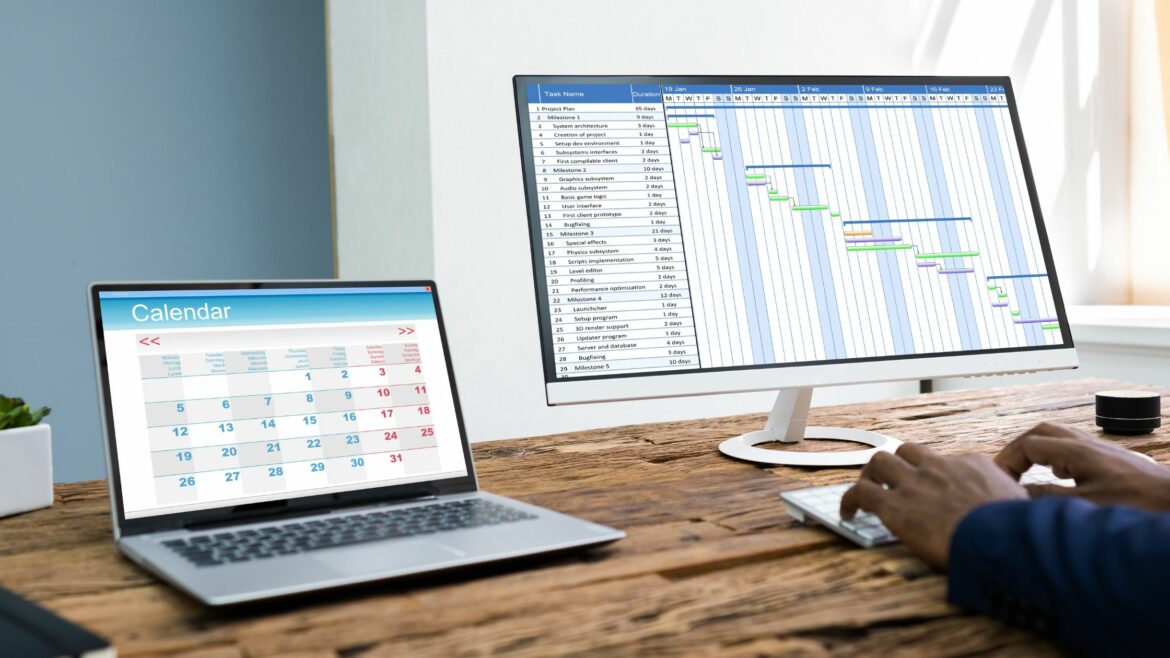As a business owner or manager, you must keep track of your employees’ attendance, including their check-in, check-out, and overtime hours, to ensure smooth workflows and accurate payroll management.
Fortunately, you can use employee attendance software to record all these data and visualize them as detailed reports.
In this article, we’ll discuss the importance of a time and attendance report and highlight four useful tools that record and analyze the time and attendance data.
This article contains
(click on the link to jump to that topic)
- What Is A Time And Attendance System?
- What Is A Time And Attendance Report?
- Why Do You Need A Time And Attendance Report?
- Top 4 Tools For Time And Attendance Reports
Let’s go.
What is a time and attendance system?
Note: Before diving into the reports, it’s essential to understand how businesses track attendance. But if you’re familiar with time and attendance systems, feel free to skip ahead to the section covering the reports.
A time and attendance system primarily monitors an employee’s start and stop time during their work hours. This system can be used by both full-time as well as hourly employees.
Let’s look at the types of time and attendance systems:
- Manual: uses paper cards that need to be manually time-stamped using a time stamping machine.
- Automated: uses RFID (Radio-frequency identification) based employee ID cards or biometrics to record employee hours when they start and stop work.
- App-based: uses internet-based geolocation or facial-recognition timekeepers for clock-in and clock-out.
Modern time and attendance management systems enable employees to clock-in and out using time clocks, mobile phones, and computers with an internet connection, etc.
Other advanced systems can also track attendance using geofencing, manage Paid Time Off (PTO), create an employee schedule, and generate detailed reports.
Time and attendance software even transfers all this tracked data into a payroll system for accurate and timely payments.
Additionally, they may also offer self-service features that enable employees to view their tracked hours, PTO accruals, current and future schedules, and more.
The main functions of a time and attendance system include:
- Tracking employee hours and attendance
- Automating the payroll system operations.
- Ensuring that employees receive appropriate overtime compensation by reducing bookkeeping errors.
- Utilizing data to generate a work summary report in the form of tables, graphs, and charts.
- Complying with government labor regulations.
What is a time and attendance report?
An advanced employee time and attendance report is more than a series of numbers or timestamps.
This document also provides a detailed analysis of employee attendance, clock-in and clock-out times, punctuality, absenteeism, etc.
Popular types of employee time and attendance reports
There are various types of reports generated by an employee attendance system.
Understanding what each employee attendance report contains will help you decide which ones are best suited for your company.
Here are the main types of employee attendance reports:
- Timecard: tracks clock-in and clock-out patterns of employees, edits made by supervisors, etc.
- Scheduling: reviews employee work schedule, shift coverage, actual vs. scheduled hours comparison, etc.
- Workforce management: monitors the trends in attendance variations, wages, productivity data, and more.
- Cost tracking: keeps track of the overtime pay, actual employee hours, historical pay, gross payments, etc.
- Budget forecasts: forecasts labor budget and schedule based on previous data.
What is included in a time and attendance report?
A modern attendance reporting system enables you to customize your report to show information relevant to your business needs.
So, what information do these reports display?
Some important data that the time and attendance report can display includes:
- Timecard or hours worked.
- Time allocation breakdown.
- Absentee hours, including the cost of absences to the company.
- Frequency and duration of absences.
- Leave breakdown into vacations, sick leave, etc.
- Variations in departmental work hours.
- Individual and department overtime hours.
- Cost to the employer based on the number of hours worked and pay rates.
These are just a few of the ways in which you can view your employees’ attendance data.
You can view these reports on your device, print them for meetings, or email them to the employee and managers. Some systems also support exporting them to other tools.
Many of these tools also enable you to save these reports for future reference. You can also integrate these reports with other tools like project management, human resource management, payroll software, etc.
Why do you need a time and attendance report?
As discussed above, a time and attendance system generates tons of data like clock-in and clock-out times, overtime, etc.
However, in a manual paper spreadsheet, you can’t make complete sense of all the attendance information in front of you.
Modern time and attendance systems can quickly analyze and highlight these crucial metrics.
These systems compile all data and turn it into an easy-to-read, actionable report. They can present the data analysis in the form of color-coded pie charts or bar graphs, line graphs, pyramid charts, etc.
Supervisors can use these comprehensive reports to understand the patterns of employee attendance behavior better. And an accurate, detailed report gives you a complete understanding of your employees’ attendance, absences and punctuality, and how they affect your business.
For example, you might notice that an employee frequently leaves early and is always unavailable for important client meetings. Or there could be another employee who often works overtime, leading to high overtime expenses.
Here are five simple steps to help you deal with these attendance issues.
Top 4 tools for time and attendance reports
Here’s a look at the key features, pricing, and user ratings of the top four time and attendance systems:
1. Time Doctor
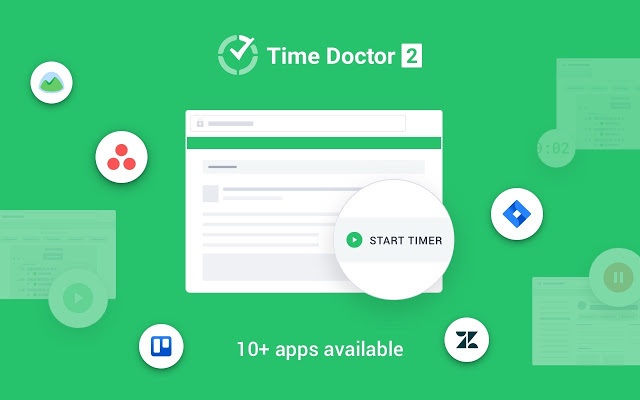
Time Doctor is a powerful employee time tracking and performance management tool used by major companies as well as by small businesses to boost their company’s productivity.
Key features
Let’s look at some of the important functionalities of the tool:
A. Manual and automatic time tracking
With Time Doctor, employees just need to start the timer when they begin work and stop it after they finish or take a break.
It’s that simple!
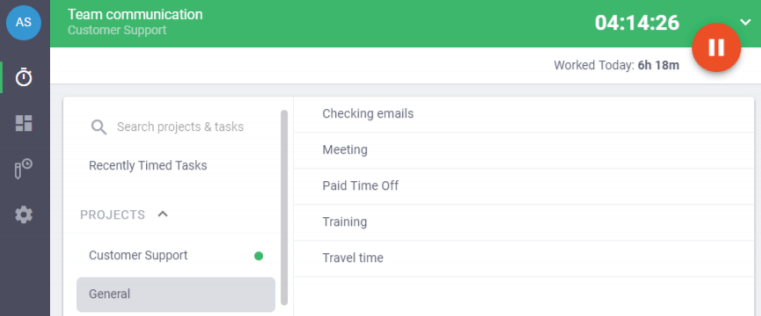
They can also manually edit their time in case they forget to track it during their actual hours.
However, if you think this happens quite often, you can switch to the automatic time tracking mode. This feature automatically turns on the timer when employees start their computers.
These timekeeping features ensure accurate time recording, which is essential for generating a precise report and also controlling the labor cost. Therefore, Time Doctor is also one of the best timekeeper software for businesses.
For maximum functionality, Time Doctor also offers mobile and offline time tracking for employees who work remotely.
B. Attendance reporting
The attendance reports show employees as present, absent, partially absent, or late according to their shifts and schedules.
An employee is labeled as late if they don’t start tracking time in the first five minutes after their shift starts.
For example, suppose an employee’s shift is scheduled at 8 am, but they start tracking their time at 8.09 am. They’ll be considered late for the shift.
Some benefits of the attendance report include:
- Provides real-time data into who’s working and who’s absent.
- Displays attendance records and workday activities in the same place.
- Improves the accuracy of your budget since you can estimate the actual number of employees required for smooth operations.
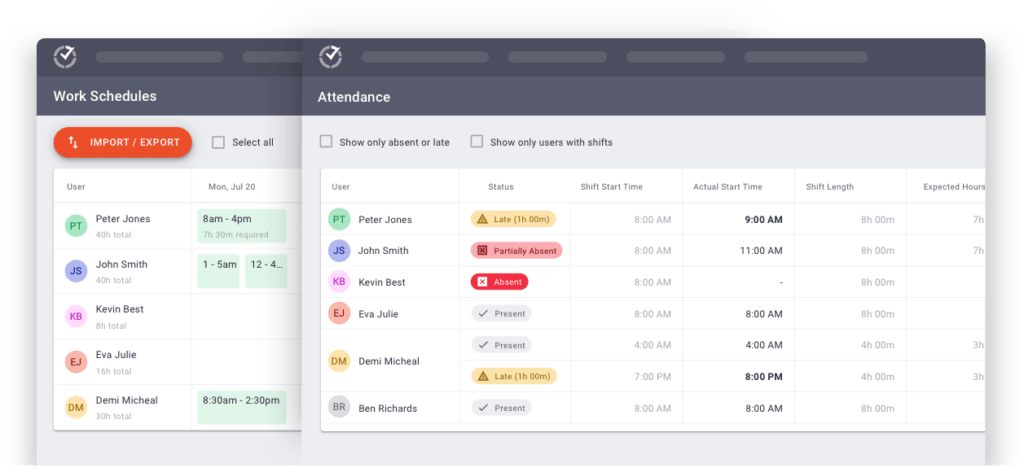
C. Work schedules
Time Doctor’s work schedule feature enables you to create and edit any employee work schedule within the app.
You can even customize the work schedule for each employee and gain better insights into their attendance.
It also allows you to:
- Save manual time by creating and updating schedules automatically.
- Monitor and manage workloads in order to prevent employees from burning out.
- Understand employee availability and manage staffing, especially during rush hours.
- Easily adjust the schedule to ensure adequate employee availability at all times.
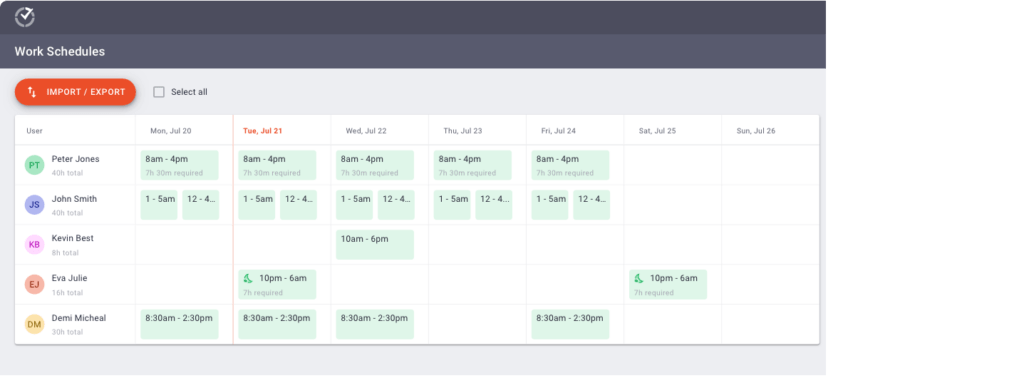
D. Comprehensive Reports
In addition to the attendance reports, Time Doctor also generates various other useful reports, such as:
- Hours tracked: Shows the number of hours tracked by the employee weekly or for a specified date range.
- Timeline: Displays the hours spent by employees on tasks and breaks daily or weekly.
- Activity summary: Indicates the active minutes and seconds, unproductive, manual, and mobile time for any employee for a selected period.
- Projects & tasks: Determine the number of hours spent on projects and individual tasks.
- Web & app usage: See the amount of time spent on various websites and applications.
Just like attendance reports, these reports display valuable and complex data in a simple, user-friendly way.
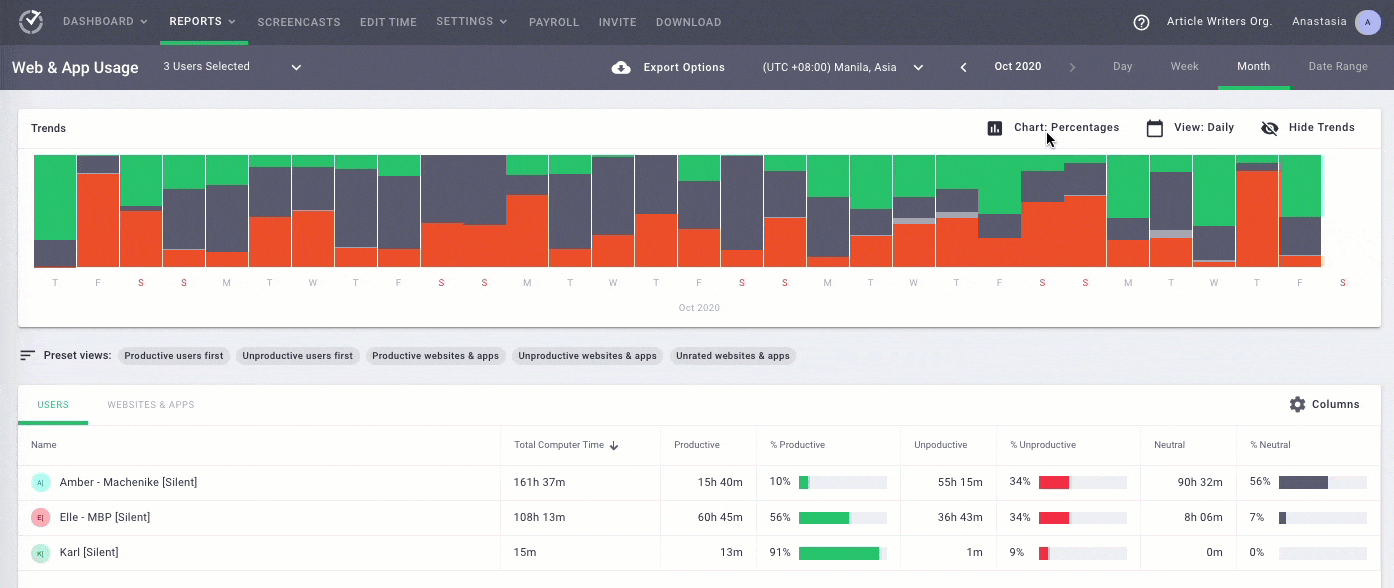
E. Payroll
Time Doctor enables you to pay your workforce directly based on their tracked total hours.
You can select any pay rate, currency, and pay period to promptly make the payments using PayPal, Wise, etc.
The payroll processing feature can significantly eliminate any errors caused by manual calculation and enable you to make accurate payments.
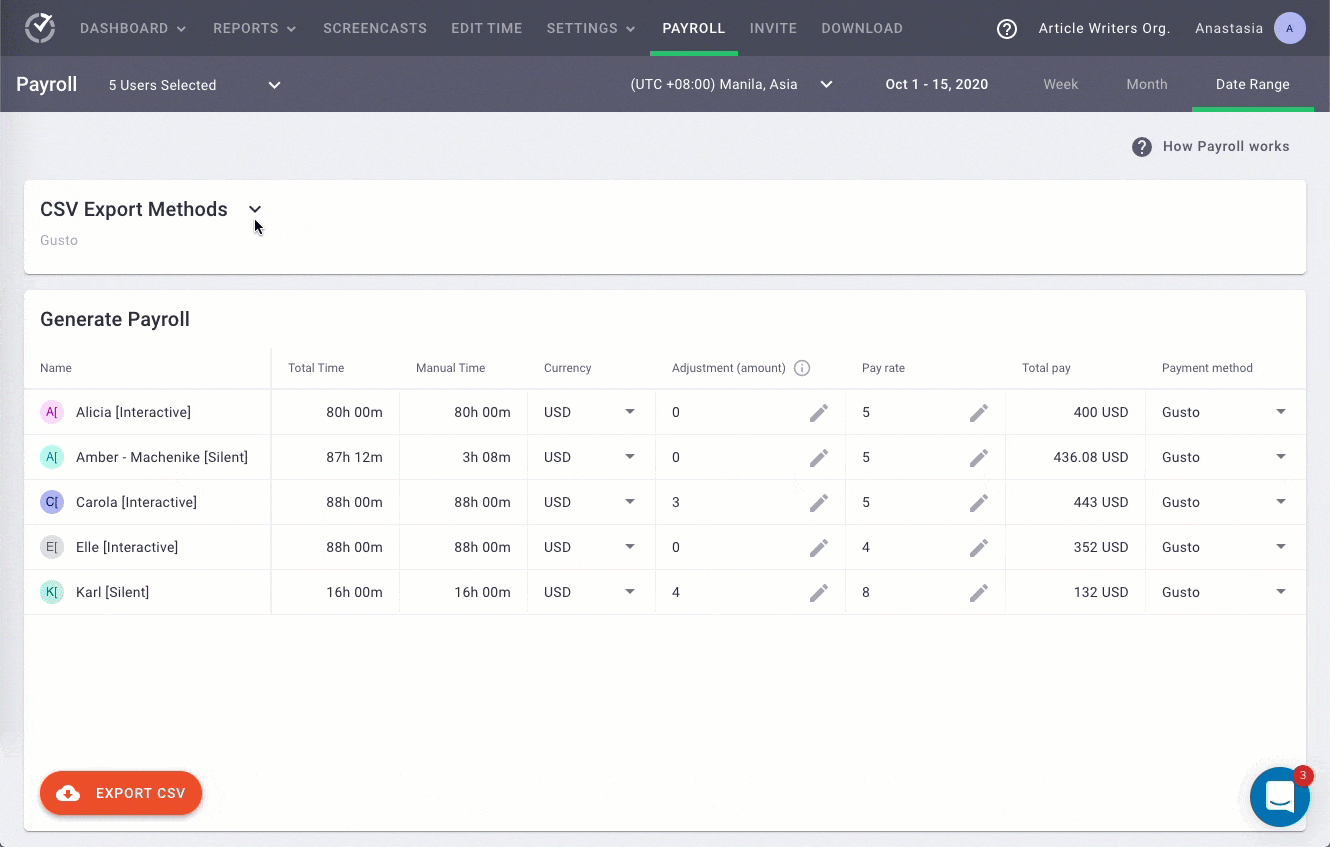
Pros
- Online and offline time tracking.
- Different productivity ratings for different websites and apps.
- Assign tasks and projects to individual team members.
- Take automatic screenshots of the computer screen so you can monitor an employee’s current activity.
- Useful Chrome extension to integrate with project management software like Asana, Basecamp, etc.
- Strict privacy and data security policies.
- Compatible with Windows, Mac, and Linux operating systems.
- Robust Android app.
- Responsive customer support team.
Pricing
Time Doctor offers a 14-day free trial (without asking for credit card details.) Paid plans start as low as $7/user per month.
User ratings
- G2: 4.4/5 (180+ ratings)
- Capterra: 4.5/5 (300+ ratings)
2. TimeClick
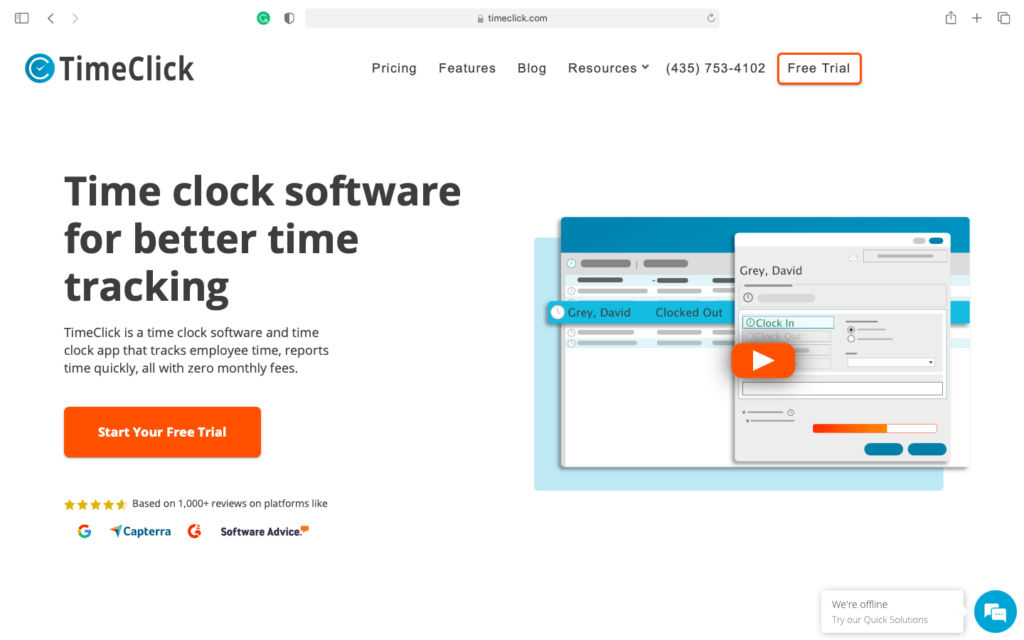
TimeClick is a time clock and timesheet app that enables you to track and report employee time. The software also increases employee accountability using features like basic scheduling and quick reports.
Key features
- Provides accurate time calculations using manual clock-in and clock-out.
- Enables employees to view their accrued time data using self-service features.
- Automates deduction of PTO, vacation, sick leave, and any other time off.
- Generates accurate reports that can be customized using various presets.
- Offers a mobile app to clock-in and out from Android and Apple devices.
Pricing
The paid plans start at $199 for a single computer as a one-time subscription.
User ratings
- G2: 4.3/5 (150+ ratings)
- Capterra: 4.7/5 (400+ ratings)
3. ClockIt
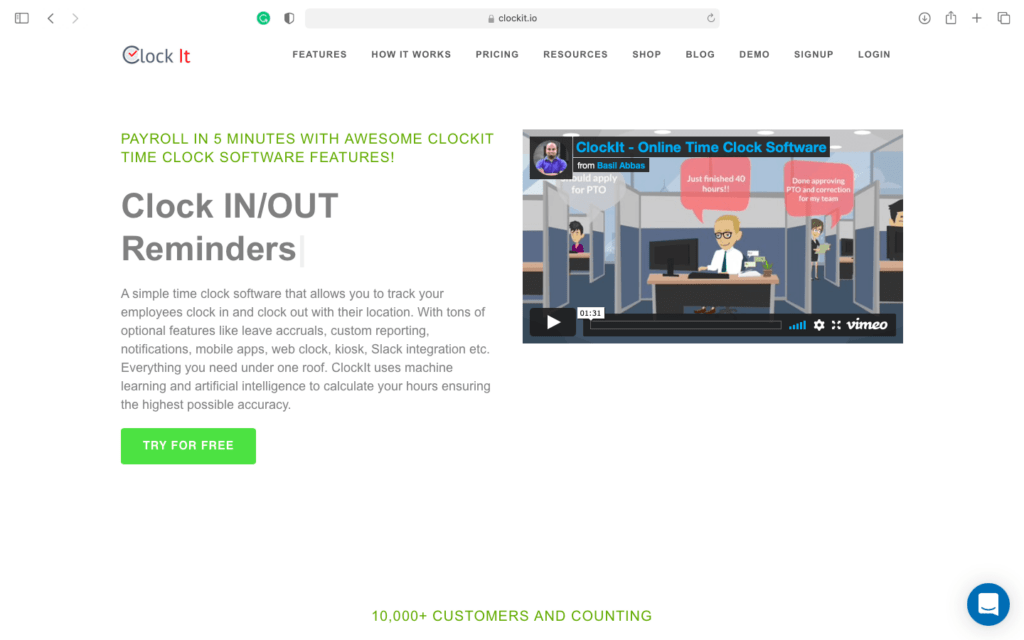
ClockIt is a simple employee time clock software that lets your employees track attendance with their location.
The tool also offers optional features like leave accruals, customized reporting, data exporting to Excel and CSV, etc.
Key features
- Tracks employees’ vacation, leaves, and PTO with automation of leave accruals.
- Generates detailed timesheet reports using the ClockIt time card calculator.
- Uses machine learning and artificial intelligence to calculate total hours worked, break hours, lunch breaks, and overtime accurately in real-time.
- Allows all users to clock-in and clock-out from one location using the time clock kiosk.
- Offers a dynamic reporting tool that enables you to view employee attendance using 20+ filters.
Pricing
The plans start at $29/month (up to 10 users) for the entire team.
User ratings
- G2: NA
- Capterra: 4.4/5 (60+ ratings)
4. EasyClocking
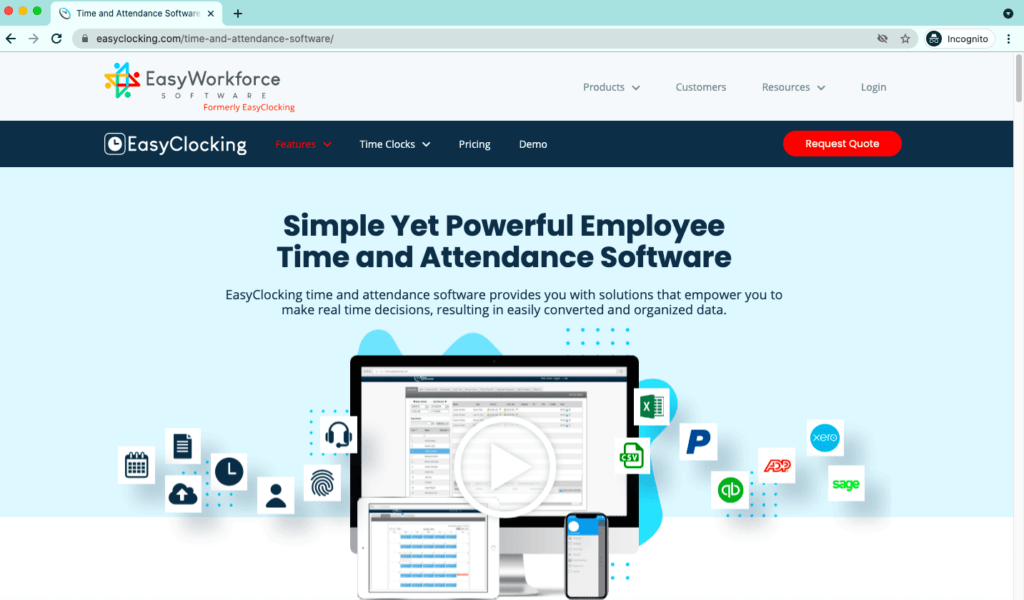
EasyClocking is an easy-to-use time and attendance software suite that helps you collect and manage employee data.
The software provides you with solutions that enable you to make real-time human resource decisions based on accurate and organized reports.
Key features
- Provides a web browser-based interface, allowing the entire workforce and admins to stay connected.
- Eliminates the need for physical paper cards or manual time clocks by providing an electronic timesheet that can be used on smartphones or tablets.
- Enables you to keep track of PTO requests, uses, vacation time, etc.
- Restricts employee clock-in and out to specific GPS locations by setting up geographic perimeters.
- Offers a self-service portal that enables employees to view their timecard details like overtime, breaks, etc., in real-time.
Pricing
Pricing is available on request.
User rating
- G2: 3.9/5 (10+ ratings)
- Capterra: 3.9/5 (10+ ratings)
Final thoughts
As an employer, having loads of data without any actionable insights is like having a USB drive without a computer to use it with.
Such information will be considered as ‘dead data’ if you can’t use it to make appropriate and timely business decisions.
Time and attendance tracking tools with powerful and customizable reporting features can help you make sense of your tracked data.
While there’s no shortage of such tools in the market, you should choose a comprehensive tool that offers multiple features like payroll processing, time tracking, etc., and is also budget-friendly.
So why not sign up for Time Doctor’s free trial today and make the most of your employee attendance data?

Andy is a technology & marketing leader who has delivered award-winning and world-first experiences.
